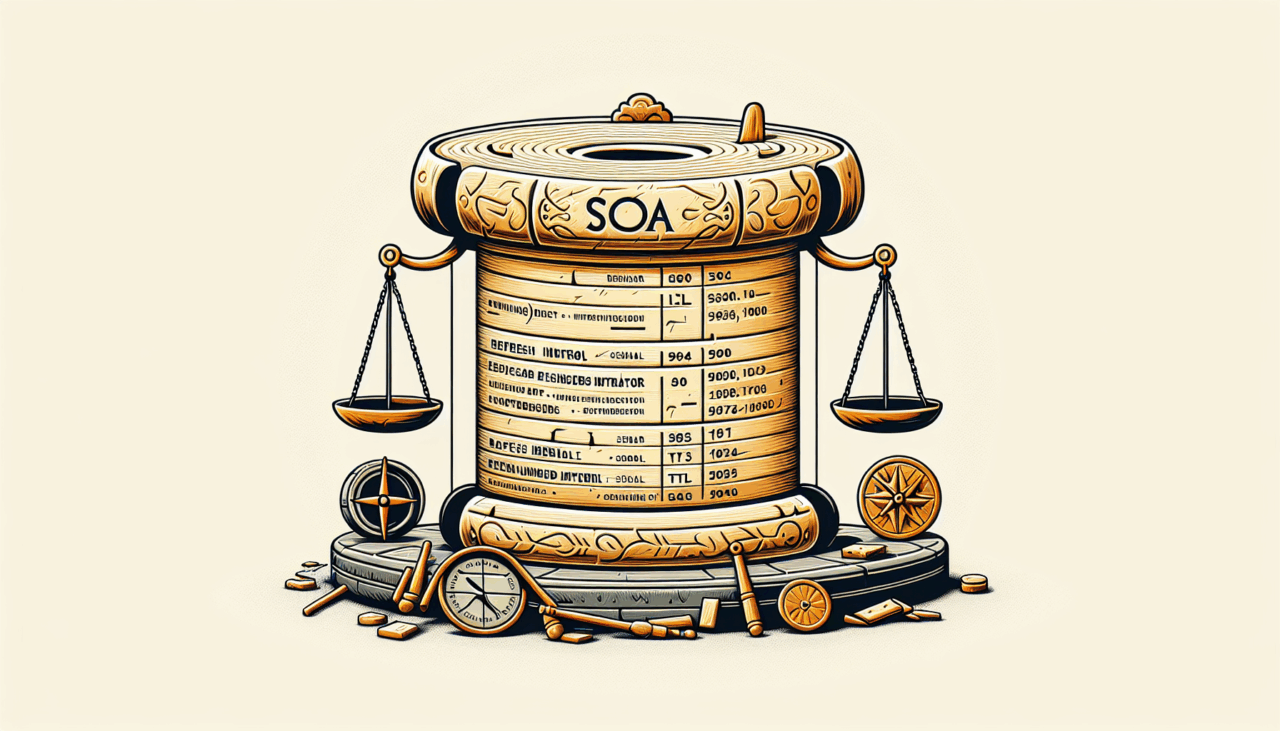In the vast realm of Domain Name System (DNS), the Start of Authority (SOA) record stands as a cornerstone, much like the foundation of a well-constructed building. Understanding its role is crucial not only for DNS administrators but also for anyone seeking to grasp the intricacies of web infrastructure. As someone who has spent countless hours unraveling the mysteries of DNS, I find the SOA record to be both a fascinating and essential component of DNS zones.
Unraveling the SOA Record
The SOA record is the first DNS record in any domain’s zone file and serves as the authoritative entry point. Think of it as the captain’s logbook for a DNS zone, documenting vital information about the domain’s DNS configuration.
Key Components of an SOA Record
An SOA record comprises several fields, each serving a distinct purpose. Here’s a breakdown:
| Field | Description |
|---|---|
| MNAME | Primary master name server for the zone. |
| RNAME | Email address of the domain administrator, with the “@” replaced by a dot. |
| Serial Number | A version number for the zone file, which increments with each update to inform secondary servers of changes. |
| Refresh | Time interval (in seconds) for secondary servers to check for updates. |
| Retry | Interval for secondary servers to retry checking for updates after a failed attempt. |
| Expire | Duration secondary servers should retain DNS information if they cannot contact the primary server. |
| TTL | Default Time to Live for records in the zone. |
Why is the SOA Record Important?
The SOA record plays a pivotal role in ensuring efficient and reliable DNS operations. Here’s why it is indispensable:
1. Zone Authority and Consistency
The SOA record establishes the primary authoritative server for a domain. This ensures that all changes to DNS records are propagated from a single source of truth, maintaining consistency across secondary servers.
2. Efficient DNS Management
The serial number in the SOA record is akin to a version control system for DNS data. Each update to the DNS zone increments this number, signaling secondary servers to fetch the latest version. This mechanism is vital for synchronizing DNS information across distributed systems, much like how updates to a shared document need to be reflected for all collaborators.
3. Optimized Resource Usage
By specifying refresh and retry intervals, the SOA record optimizes the communication between primary and secondary servers. This prevents unnecessary queries and ensures that DNS information is current without overloading network resources.
4. Failover and Redundancy
The expire field in an SOA record provides a safety net. If the primary server becomes unreachable, secondary servers can still serve DNS data for a specified period. This failover mechanism is crucial for maintaining domain availability during network disruptions.
Practical Application: Configuring an SOA Record
Setting up an SOA record might seem daunting, but it’s a straightforward process when approached methodically. Here’s a simple example:
example.com. IN SOA ns1.example.com. admin.example.com. (
2023101501 ; Serial number
7200 ; Refresh interval (2 hours)
1800 ; Retry interval (30 minutes)
1209600 ; Expire interval (2 weeks)
3600 ; Minimum TTL (1 hour)
)
Breaking Down the Example:
- Primary Master:
ns1.example.comis designated as the primary server. - Email Address:
admin.example.comis the contact for DNS issues (note the dot replacing the “@” symbol). - Serial Number:
2023101501reflects the date and sequence of the change, a common practice. - Refresh and Retry: Set to ensure timely updates without overloading the network.
- Expire and TTL: Offer a balance between availability and resource efficiency.
Real-World Scenario: SOA in Action
During my tenure managing DNS for a large corporation, we faced a significant challenge when rolling out a new product across multiple geographies. Ensuring that DNS changes propagated swiftly and accurately was critical to the product’s success. By meticulously configuring the SOA record, we achieved seamless synchronization across hundreds of servers, averting potential downtime and ensuring a smooth launch.
Conclusion
The SOA record, while just one piece of the DNS puzzle, is a linchpin in domain management, ensuring integrity, efficiency, and reliability. Whether you’re a seasoned DNS expert or just beginning your journey, understanding the SOA record’s function will empower you to manage DNS zones effectively, much like a skilled conductor orchestrating a symphony. As you delve deeper into DNS, remember that each record, starting with the SOA, plays a crucial role in the harmonious operation of the internet.

Comments (0)
There are no comments here yet, you can be the first!